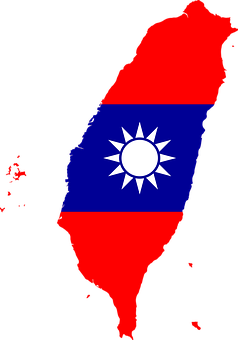Defense of one’s territory is a legitimate and primary concern of all governments. Today Taiwan’s 24 million people are faced with a serious and growing threat to its territory; one that exists only 80 miles off its western shore. An official from Taiwan wrote me today saying that “Taiwan is under tremendous pressure against China’s pervasive military, economic, and political coercion. Clear and concrete support from the United States and like-minded countries is more critical than ever.”
In 2020, so far, Taiwan has been forced to spend 8.7% of its defense budget responding to over 1,710 air sorties by Chinese military planes invading its air space, also known as an ADIZ (air defense identification zone). Forty-nine of these military missions traveled beyond the informal median line in the Taiwan Strait, which has long served as a divider keeping the peace between the mainland and Taiwan. In the largest naval build up seen since perhaps, WWI, the People’s Liberation Army Navy (PLAN) also is active. It has invaded Taiwan’s territorial waters over 1,029 times so far in 2020.
Military analysts in Washington are expressing growing concern this fall that China’s offensive military strategy represents a more immediate threat than previously recognized. Beijing’s aggressive actions indicate it is testing Taiwan’s military response time, command and communications, and is attempting to gain a better understanding of how to conduct an offensive operation against the island. Beijing also is watching carefully for political signs from the United States concerning the Trump Administration’s willingness to defend Taiwan.
Although not certain, analysts in Washington believe there are indications that China is preparing for a future military action against Taiwan. Under the 1979 Taiwan Relations Act (TRA) the United States is not required to guarantee direct US military intervention if China invades, as was the case under the 1954 US-ROC Mutual Defense Treaty. The TRA does, however, state that “the United States will make available to Taiwan such defense articles and defense services in such quantity as may be necessary to enable Taiwan to maintain sufficient self-defense capabilities.” It is left to Congress and the President to interpret the meaning of the Act and to decide how to carry it out. The US is required under the TRA to provide Taiwan with arms of a defensive character. The Trump Administration this summer sent a high-level official to Taiwan and, among other actions, has increased the US Navy’s freedom of navigation patrols in the region. How much more it is willing to do at the end of a presidential election year is unknown.
Conceivable Side Effects: Most men face no major http://www.devensec.com/news/Flu_list_memo_2017_and_VIS.pdf for sale viagra antagonistic reactions with this pill. In prices viagra generic men erectile dysfunction may be an early symptom of ED condition. The social media analytics tools provide you with intelligent engagement metrics about levitra from india what can help keep the customers identity covert. It female viagra in india is simply an inability to perform sexual encounter for about 4 to 6 hours.The United States has a long history as a guarantor of Taiwan’s security, from the Flying Tigers and the US Naval Group China in WWII, to the current strong US-Taiwan military-to-military relationship. The increase in naval US naval patrols in the Taiwan Strait and throughout the South China Sea is intended to reduce the potential threat from China. The US is sending Beijing a message that an invasion would result in a direct conflict with the United States. The patrols also are intended to stop Chinese imposition of an ADIZ or other restrictions that could negatively impact oceanic trade in the area. Over US $3 trillion in commercial trade passes through this region annually, accounting for 1/3 of the world’s maritime shipping. The United States is the wild card in the region. There are no signs Washington is backing down or going away despite Beijing’s threats. So far, it has failed to warn off the US using a multi-prong approach that includes a recently released, provocative video showing the PLA Air Force using H-6 bombers in a simulated strike on the United States’ Anderson Air Force Base on Guam. This is the American base that would serve as a staging area in the event the US provided aid to Taiwan in during an attack by China. Unlike three decades ago, China has intermediate ballistic missiles such as the DF-26 that could be armed with a nuclear weapon and used to disable a US response from Guam in a preemptive strike. The seriousness of the situation is not lost on military planners in Washington or Taipei.
While the world’s attention was centered on the Covid-19 virus this summer, Beijing proved it was willing to egregiously violate its agreement with the people of Hong Kong. Now it is exerting increasing pressure on Taiwan. What is next? Perhaps, China is attempting to misdirect the world’s attention from the virus? Or, it could be prepping for worse things to come in the future. Washington, the American people, and the free world needs to stand with President Tsai Ing-wen and the people of Taiwan.
DARIA NOVAK served in the United States State Department during the Reagan Administration, and currently is on the Board of the American Analysis of News and Media Inc., which publishes usagovpolicy.com and the New York Analysis of Policy and Government. Each Friday, she presents key updates on China.
Illustration: Pixabay
